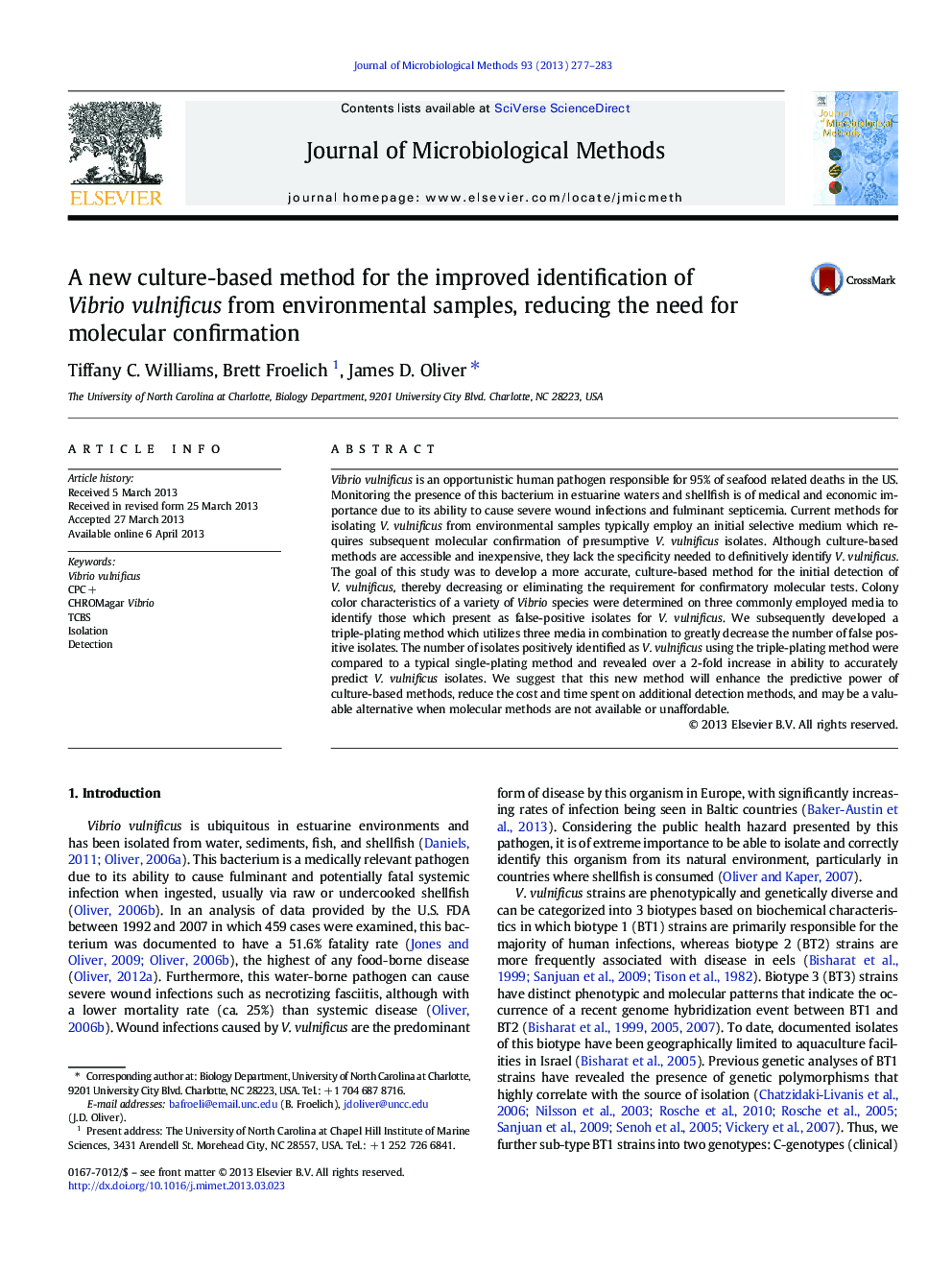| Article ID | Journal | Published Year | Pages | File Type |
|---|---|---|---|---|
| 2091474 | Journal of Microbiological Methods | 2013 | 7 Pages |
•We identified several Vibrio spp. that appear identical to V. vulnificus on media.•We developed a more accurate, culture-based method for identifying V. vulnificus.•The triple-plating method markedly reduced the presence of false-positive isolates.•This new method reduces the need for molecular testing.•The triple-plating method is less expensive and more accessible world-wide.
Vibrio vulnificus is an opportunistic human pathogen responsible for 95% of seafood related deaths in the US. Monitoring the presence of this bacterium in estuarine waters and shellfish is of medical and economic importance due to its ability to cause severe wound infections and fulminant septicemia. Current methods for isolating V. vulnificus from environmental samples typically employ an initial selective medium which requires subsequent molecular confirmation of presumptive V. vulnificus isolates. Although culture-based methods are accessible and inexpensive, they lack the specificity needed to definitively identify V. vulnificus. The goal of this study was to develop a more accurate, culture-based method for the initial detection of V. vulnificus, thereby decreasing or eliminating the requirement for confirmatory molecular tests. Colony color characteristics of a variety of Vibrio species were determined on three commonly employed media to identify those which present as false-positive isolates for V. vulnificus. We subsequently developed a triple-plating method which utilizes three media in combination to greatly decrease the number of false positive isolates. The number of isolates positively identified as V. vulnificus using the triple-plating method were compared to a typical single-plating method and revealed over a 2-fold increase in ability to accurately predict V. vulnificus isolates. We suggest that this new method will enhance the predictive power of culture-based methods, reduce the cost and time spent on additional detection methods, and may be a valuable alternative when molecular methods are not available or unaffordable.
